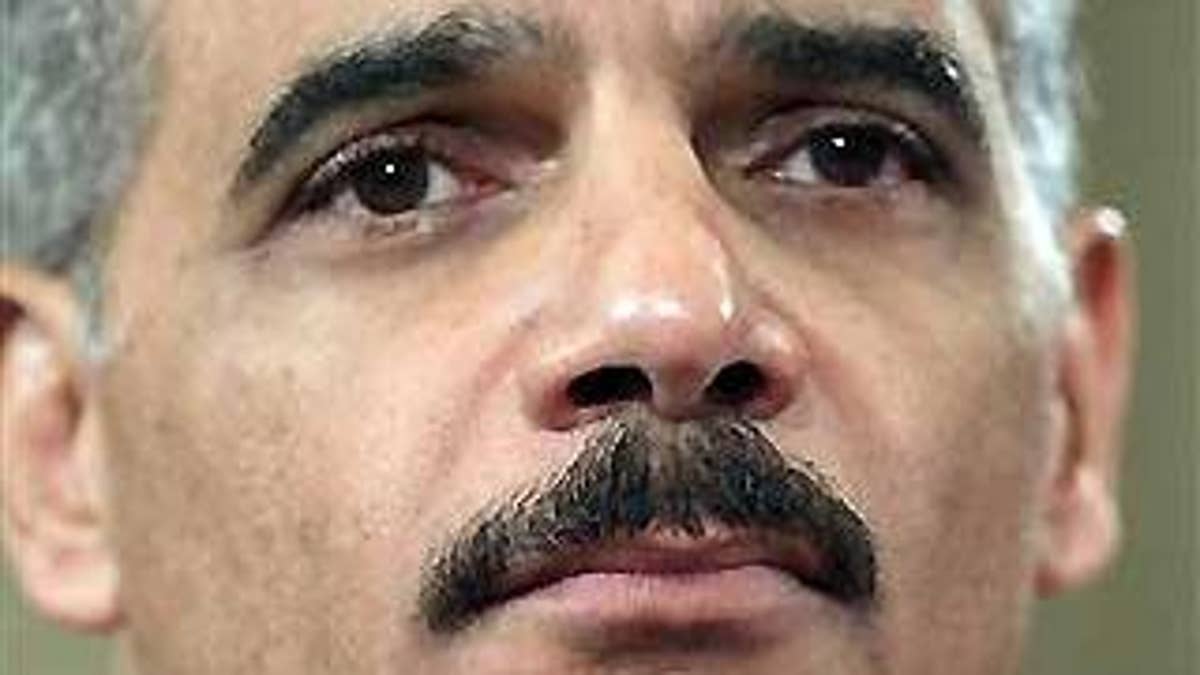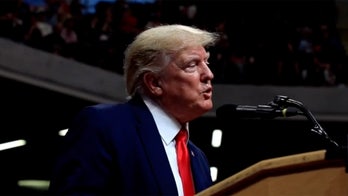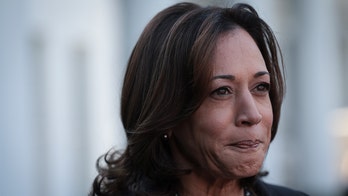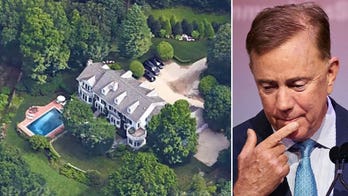
A picture says a thousand words. And so does where it's placed.
Seven weeks ago, after promising "a new day" for the Justice Department and the nation at his swearing-in ceremony, Attorney General Eric Holder had to face some tough decisions: What is the best way to prevent another terrorist attack against the homeland? What should we do with the detainees at Guantanamo Bay? And which portraits should I hang in the conference room next to my office?
The answer to that last question paints a good picture of how Holder may end up tackling the other questions, and how he views the Justice Department he's inherited.
There are roughly 80 portraits hanging in the halls and offices of the Justice Department -- one for every attorney general dating back to George Washington's administration.
Upon taking office, Holder was able to pick any four to hang in his conference room, which hosts administration officials, foreign dignitaries and anyone else who has business with the nation's top cop. Holder chose portraits of these past attorneys general: Robert Jackson, Elliot Richardson, Robert F. Kennedy and Edward Levi.
"These are all men who I think are good examples of people I'd like to follow," Holder said at a briefing with reporters last week.
They are also men who Holder believes can help inform his efforts to repair a Justice Department accused of sidestepping the law, politicizing law enforcement efforts, and "antagonizing" much of the world, according to a senior Justice Department official who came in with the Obama administration.
Like Holder, Robert Jackson, the nation's 57th attorney general, came to the Justice Department at a time when the country was occupied with national security matters.
When President Franklin Roosevelt nominated Jackson to lead the Justice Department in 1940, communism was on the move and World War II was underway. Jackson's "guiding principle" was that "in the process of upholding democratic ideals, we must not unwittingly destroy or impair what we are cherishing and endeavoring to preserve," namely civil liberties, according to a Justice Department report in 1940.
Holder has a similar "guiding principle" with respect to modern-day national security matters, the senior Justice Department official said.
"The leadership of this Justice Department feels very strongly that you can enforce the law and protect the national security in a way that is consistent with our fundamental values," the senior official said. "It is the guiding principle of this administration that you have to keep the nation safe, and keeping the nation safe in a way that's consistent with our values doesn't make us weaker it makes us stronger."
The official said the current Justice Department, led by Holder, believes the Bush administration acted outside the law in the way it conducted terror investigations, detained terror suspects and interrogated terror suspects. In fact, during his confirmation hearing, Holder said the military commissions set up to try terror suspects "don't ... have all of the due process requirements that I would like to see contained in them."
"By taking such radical steps [the previous administration] antagonized not just our enemies but antagonized our allies, so we didn't have allies willing to help us," the senior official said.
"European allies who have been with us time and again throughout our history ... didn't show a willingness to work with us on the transfer of Guantanamo Bay detainees, which is a big priority, and wouldn't as long as the last administration was constantly sticking its thumb in their eye," the senior official said.
But it seems Holder's reason for hanging Jackson's portrait in his conference room has less to do with foreign affairs and more to do with recent anti-terrorism efforts inside the United States, such as conducting warrantless wiretapping and barring detainees from challenging their detentions in U.S. courts.
"Attorney General Jackson is a person who had a good sense of executive power and how it is to be used," Holder said last week. "He is the person who ... really set out how the executive branch can both maximize its power and act appropriately."
Holder was actually referring to Jackson's later tenure as a U.S. Supreme Court justice, when he opposed an effort by then-President Harry Truman to take over steel mills for the Korean War effort in the 1950s. In a concurring opinion, Jackson argued that the president's authority "is at its maximum" when he's following laws set by Congress.
During his confirmation hearing, Holder called Jackson's opinion in the case "instructive." And in a speech last year, Holder said the Bush administration was acting "in direct defiance of federal law by authorizing warrantless surveillance of American citizens."
The senior Justice Department official went even further.
"The last administration made so many assertions that were beyond the pale on executive power," the official said. "They actually may in the long run weaken the executive branch by having things struck down by the courts. They needlessly teed up a lot of challenges to long-held doctrines that [now] have been struck down by the courts."
Specifically, the official pointed to federal court and Supreme Court rulings that a Guantanamo Bay detainee could challenge his detention in a federal civilian court. The Bush administration "picked a big fight, and they lost in a Supreme Court that is generally considered to be a right-leaning Supreme Court," the official said.
The official said the new Justice Department will operate "within the rule of law, within the Constitution and within statute."
One "big example" of this is a Justice Department filing earlier this month that ended the use of the phrase "enemy combatant" and argued that "the President's authority to hold detainees derives not from the Constitution or from some inherent commander-in-chief power but from statute passed by congress," the official said.
The official pointed a finger directly at Alberto Gonzales, who was President Bush's White House Counsel before becoming attorney general in 2005.
"It's the broad assumption in the country and in town" that Gonzales is responsible for much of the Justice Department's mistakes, the official said.
Gonzales, though, has taken issue with such criticism, insisting he did "absolutely" nothing wrong in his efforts to fight terrorism and obtain intelligence from terror suspects.
"What I know is that we did everything we could lawfully to protect our country," said Gonzales, who also chose to hang Jackson's portrait in his conference room while he was attorney general. "[Justice Department lawyers] gave their very best advice, acting in good faith based upon their best interpretation of the law to work with the policymakers in forming the policy that has made our country safe from an attack since 9/11. "
Nevertheless, the decor in Holder's conference room is inspired by more than just national security matters.
Three decades after Jackson's time at the Justice Department, Elliot Richardson was appointed by President Richard Nixon to be the nation's 69th attorney general. He lasted only five months, resigning in protest after Nixon ordered him to fire the special prosecutor overseeing the Watergate investigation. Richardson's portrait is likely to be hanging in the attorney general's conference room for longer than he was actually attorney general.
"Elliot Richardson is a constant reminder to me about the importance of independence for the Justice Department from the presidency, and [a reminder] to be an independent player in the executive branch," Holder said last week.
Asked whether the current Justice Department believes politics played too big of a role in the previous Justice Department, the senior official said, "Just look at the Inspector General's reports and ... the fact that the attorney general had to resign."
Gonzales resigned in August 2007, amid accusations that nine U.S. attorneys were inappropriately fired a year earlier. Since then, the Justice Department's inspector general has issued four reports accusing Justice Department officials of making politically-motivated decisions in the course of their work.
But Gonzales has said the inspector general's reports, particularly the one covering the U.S. attorneys' firings, actually absolve him of any serious misconduct.
"If you look carefully at the report that took over a year to complete, hundreds of pages, there's no finding at all of any kind of a criminal wrongdoing on my part," Gonzales said on Fox News' "The O'Reilly Factor" in December. "And I think the American people should feel comforted by the fact that the report, while it may have found wrongdoing by staffers at the department, found no evidence whatsoever of politicization of the work of prosecutions by the Department of Justice."
Still, at his swearing-in ceremony last month, Holder promised that his Justice Department would be "no place for political favoritism," which he called "a break from the immediate past."
To join the other portraits, Holder chose to hang Robert F. Kennedy's portrait in his conference room, which is located on the fifth floor of the Robert F. Kennedy Department of Justice Building in Washington.
"Robert Kennedy's a hero of mine, and the building's named after him," Holder said in explaining his choice.
Kennedy became a hero of the civil rights movement during the 1960s, and just before then the Justice Department established a Civil Rights Division to help enforce "the first civil rights statutes since Reconstruction," according to the Justice Department's Web site. But Holder has said repeatedly that the division lost its way under President George W. Bush.
"In the last eight years, vital federal laws designed to protect rights in the workplace, the housing market, and the voting booth have languished," Holder said at his confirmation hearing.
One of the inspector general's reports issued last year focused on hiring practices within Gonzales' Civil Rights Division. It found that one top-ranking official in the division hired 63 attorneys with conservative affiliations and only two attorneys with liberal affiliations.
Holder has since said "reinvigorating" the Civil Rights Division is "a priority" for him.
"The notion that the Justice Department would ever take into account a person's political affiliation or political beliefs in making hiring decisions is antithetical to everything that the department stands for and everything that I'm familiar with," Holder said at his confirmation hearing
In fact, the portrait of Gonzales and his immediate predecessor, Attorney General John Ashcroft, have been moved to the end of a long hall on the Justice Department's fifth floor. They used to be close to the attorney general's office, but now they hang more than an Olympic swimming pool's length from there, on the other side of an elevator bank. Gonzales' portrait faces an air duct and a blank wall.
"That's really far down there," one Justice Department employee said. What's more, when Gonzales' portrait was unveiled -- usually a very public event -- he insisted it be a small, private event closed to the press, according to the employee and others at the Justice Department.
All of the above could explain why Holder chose a portrait of Edward Levi -- whom President Gerald Ford picked to be attorney general in the wake of the Nixon presidency -- to round out the artwork hanging in his conference room.
"[At the time] the American people and the Congress had lost respect because of ineffective and inappropriate leadership," Ford told a University of Chicago newspaper in 2000. "When I assumed the presidency in August 1974, it was essential that a new attorney general be appointed who would restore integrity and competence to the Department of Justice."
Last week, when asked why he chose the Levi portrait, Holder said, "Attorney General Levi is a person who came to the department at a time when it was in crisis and after it had suffered through a crisis, and put the department back in a way that I hope I will be able to do."
Levi's portrait was actually in the conference room before Holder was ever confirmed. Michael Mukasey, who took over Bush's Justice Department after Gonzales resigned, had already picked Levi's portrait for himself to go in the conference room.
It was really Mukasey who "had to come in here and clean things up," according to the Justice Department employee. The senior official agreed, but added, "There's still a lot to do."




